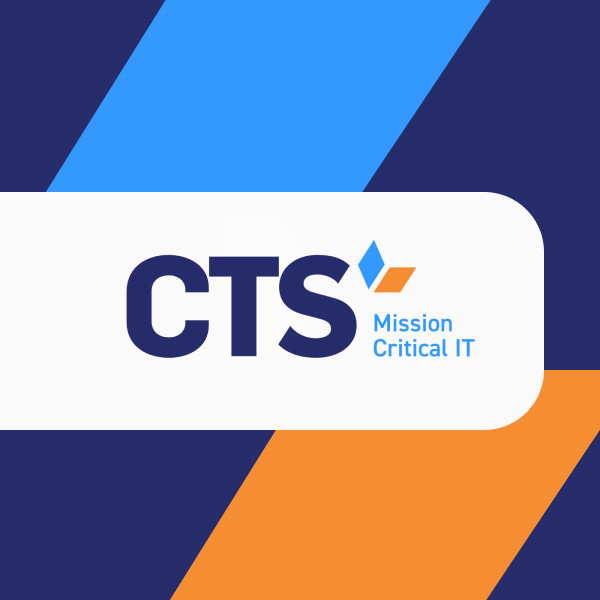Boston MSP Explains Why Network Security Vulnerabilities Remain a Major Threat
A new Mastercard survey of 5,000 SMB owners found 46% have faced a cyberattack, and nearly 20% didn’t survive it.
Sachin Gujral, Founder & CEO of CTS, says, “Most companies fail because small weaknesses pile up, unnoticed, until attackers strike. Cybersecurity today demands the discipline to uncover risks early, and the readiness to act on them immediately.”
Cyber attackers aren’t slowing down. They’re getting smarter, faster, and more precise. Every overlooked vulnerability becomes an open door, and once attackers get in, the damage is swift and costly.
Every weak point, from misconfigured firewalls to outdated software, is often invisible until it’s too late.
This guide explores:
- The most common types of vulnerabilities in network security
- The threats that exploit them
- The strategies your business needs to stay ahead
Whether you’re a school, startup, nonprofit or an enterprise, understanding and addressing these risks is crucial to the success of your business.
This post from a reliable MSP in Boston explains why network security vulnerabilities remain one of the biggest threats to modern businesses - and how proactive defense strategies can prevent costly breaches before they happen.
What Are Network Vulnerabilities?
Network vulnerabilities are the weak points in your systems, applications, or devices that attackers exploit to gain unauthorized access. They are not the attacks themselves, since that is the role of cyber threats.
Think of it this way:
- Vulnerabilities are the unlocked doors.
- Threats are the criminals who walk through them.
These weaknesses often stem from delayed software patches, unmonitored devices, or overlooked access controls. Every missed detail, no matter how small, makes your business a more attractive target for potential threats.
Knowing the difference between vulnerabilities and threats is important. Once you see how attackers exploit these gaps, the case for proactive defense becomes undeniable.
Common Network Vulnerabilities That Expose Businesses
Some network vulnerabilities are so basic and so widespread that attackers count on them. When overlooked, these issues create predictable, exploitable pathways into your systems.
Here are four of the most common culprits:
1. Unpatched Software and Outdated Systems
Delaying updates is one of the riskiest habits in IT. Zero-day exploits strike fast, and unsupported systems such as Windows 7 or legacy routers become easy targets. Attackers actively scan for these weaknesses.
2. Weak Passwords and Poor Authentication Practices
Short, reused passwords remain alarmingly common. Without multi-factor authentication (MFA), attackers can hijack accounts in minutes using brute force tools or stolen credentials.
3. Misconfigured Firewalls and Access Points
Firewalls and routers must be properly configured to block unauthorized traffic. When ports are left open or rules are too permissive, attackers can escalate access deeper into your network.
4. Insider Risks from Employees or Contractors
Whether accidental or intentional, insider actions pose serious threats. Phishing, data leaks, and misuse of access rights are costly. Ponemon Institute reports insider threats cost organizations an average of $15.4 million annually.
Types of Vulnerabilities in Network Security
The types of vulnerabilities in network security range from software flaws to social engineering. You need to be aware of how each one functions.
- Phishing and social engineering: Attackers craft convincing emails or calls, tricking staff into sharing credentials or clicking malicious links. Spear phishing and whaling target executives specifically, amplifying the damage.
- Ransomware and malware infections: Malicious software encrypts files or exfiltrates sensitive data. Ransomware downtime cost US businesses $159 billion in 2021. Payment rarely guarantees recovery.
- Zero-day vulnerabilities: These are flaws that vendors have not yet patched. Attackers exploit them before updates are released, leaving you with little warning.
- Insecure APIs and cloud misconfigurations: With cloud adoption rising, APIs and storage services become targets. A single misconfiguration can expose millions of records to unauthorized access.
These categories show how cybersecurity vulnerabilities intersect with daily business operations. One overlooked gap creates multiple avenues for exploitation.
Types of Network Security Threats Businesses Face
While vulnerabilities represent the weak spots in your network, threats are the active weapons attackers use to exploit them. Understanding these threats is important for building a defense that goes beyond firewalls and antivirus software.
Here are three of the most common and damaging types of network security threats:
Distributed Denial of Service (DDoS) Attacks
Botnets, networks of hijacked devices, overwhelm systems with traffic until they crash. These attacks can paralyze websites, applications, and services.
Alarmingly, DDoS-for-hire services are readily available on underground forums, making this threat accessible to even low-skill attackers.
Account Takeovers
Using stolen or weak credentials, attackers gain access to user accounts and pivot deeper into your systems. This often leads to financial fraud, data theft, and unauthorized transactions. Without multi-factor authentication, these breaches can happen in minutes.
Business Email Compromise (BEC)
Attackers impersonate executives, vendors, or partners to trick employees into transferring funds or sharing sensitive files.
According to the FBI’s IC3 Report, losses from BEC attacks reached $2.7 billion in 2022, making it one of the costliest cyber threats.
These threats demonstrate that technical defenses alone are not enough. To stay protected, businesses must combine strong cybersecurity tools with social awareness, employee training, and layered monitoring.
The Cost of Ignoring Information Security Vulnerabilities
Overlooking information security vulnerabilities is a business risk with far-reaching consequences. When these gaps go unaddressed, the damage ripples across financial, reputational, and legal domains.
Here’s how the impact unfolds:
Financial Losses
Recovery costs, lost revenue from downtime, and regulatory fines can escalate quickly. For example, HIPAA violations can cost healthcare providers up to $1.5 million per year, and that’s before factoring in remediation and legal fees.
Reputational Damage
Once customer data is exposed, trust evaporates. Public breaches often lead to lost clients, negative press, and long-term brand erosion. Many businesses never fully regain confidence after a major incident.
Compliance Risks
Industries such as healthcare, finance, and education operate under strict regulatory frameworks. Ignoring vulnerabilities can result in penalties, lawsuits, and disqualification from key partnerships or certifications.
Every ignored vulnerability becomes a compounding liability, one that grows more expensive and disruptive over time.
How to Detect and Prevent Cyber Vulnerabilities

While no system is invulnerable, the goal is to detect and neutralize risks before they escalate. A proactive approach transforms vulnerabilities from ticking bombs into manageable risks.
Here are four essential tactics:
- AI-Driven Monitoring Tools: Machine learning analyzes user behavior and system activity to flag anomalies in real time, dramatically reducing response times.
- Sandboxing and Anomaly Detection: Suspicious files or scripts are tested in isolated environments before they reach your live network, preventing malware from spreading.
- Multi-Factor Authentication (MFA): Even if credentials are compromised, MFA adds a critical layer of protection, blocking unauthorized access and reducing account takeover attempts.
- Patch and Update Cycles: Regular updates close known gaps. Automated patch management ensures no device is left behind, minimizing exposure windows.
Together, these steps create a layered defense strategy that keeps your business agile, secure, and resilient.
Best Practices to Reduce Network Security Vulnerabilities
Reducing network vulnerabilities is powered by consistent discipline across people, processes, and technology. To build strong, sustainable defenses, businesses must focus on the following areas:
- Employee Awareness and Phishing Simulations: Staff training and simulated phishing campaigns help reduce click rates and build a culture of vigilance. Employees become part of the defense, not the vulnerability.
- Privileged Access Management: Limiting administrator rights to only those who truly need them reduces the risk of misuse or escalation. Monitoring privileged accounts adds an extra layer of accountability.
- Regular Risk Assessments: Continuous audits, including penetration testing, vulnerability scans, and compliance reviews, reveal hidden weak spots before attackers find them.
- Vendor and Supply Chain Security Checks: Attackers often target third-party partners with weaker defenses. Vetting vendors and requiring proof of security practices before granting access helps close indirect attack paths.
When combined, these practices create a layered defense strategy that protects against both common and complex vulnerabilities.
Preparing for Emerging Cyber Threats and Vulnerabilities
As technology evolves, so do the tactics of cyber attackers. Staying secure means looking ahead, anticipating new threats before they reach your environment.
Here are three emerging risks businesses must prepare for:
- Generative AI-Powered Attacks: Attackers now use AI to craft highly convincing phishing messages that bypass traditional filters and fool even trained employees.
- Supply Chain Threats: Compromised software updates or vulnerable third-party vendors can introduce backdoor access points into enterprise networks, often undetected until damage is done.
- Advanced Ransomware Tactics: Modern ransomware gangs steal data and threaten public leaks, adding reputational damage to operational disruption.
Staying ready requires adaptive defenses, continuous monitoring, and a mindset that treats cybersecurity as a living, evolving discipline.
Threat Detection Tools vs Coverage
Too often, businesses invest in tools without comparing their coverage. This table highlights how various detection methods handle different types of network security threats.
| Tool/Method | Strengths | Weaknesses | Best Use Case |
| AI-Driven Monitoring | Real-time anomaly detection across networks | High upfront cost and training required | Large enterprises with active threats |
| Sandboxing | Stops unknown malware before it reaches users | Resource-intensive, slows workflows | File-heavy industries like legal or finance |
| Traditional Antivirus | Detects known malware and viruses quickly | Weak against zero-day exploits | Basic endpoint protection |
| Multi-Factor Authentication | Prevents account takeovers | User resistance and adoption hurdles | Remote workforces and cloud-heavy setups |
| Regular Vulnerability Scans | Identifies weak points proactively | Limited against fast-evolving threats | Compliance-driven environments |
Eliminate Blind Spots Before They Become Entry Points with a Trusted Managed Services Provider in Boston
Network security vulnerabilities are business risks that demand more than quick fixes. They require a strategy rooted in proactive defense, expert monitoring, and continuous improvement.
CTS delivers that strategy with:
?? 24/7 live threat monitoring to catch risks before they escalate
?? Support for 8,300+ end users across multiple industries
?? CompTIA A+, Network+, and Security+ certified experts for dependable guidance
?? Compliance-focused cybersecurity to meet audit and insurance standards
CTS is your trusted ally for building a secure, future-ready network. Contact our team for managed IT services in Boston and take the first step toward stronger, smarter protection.




